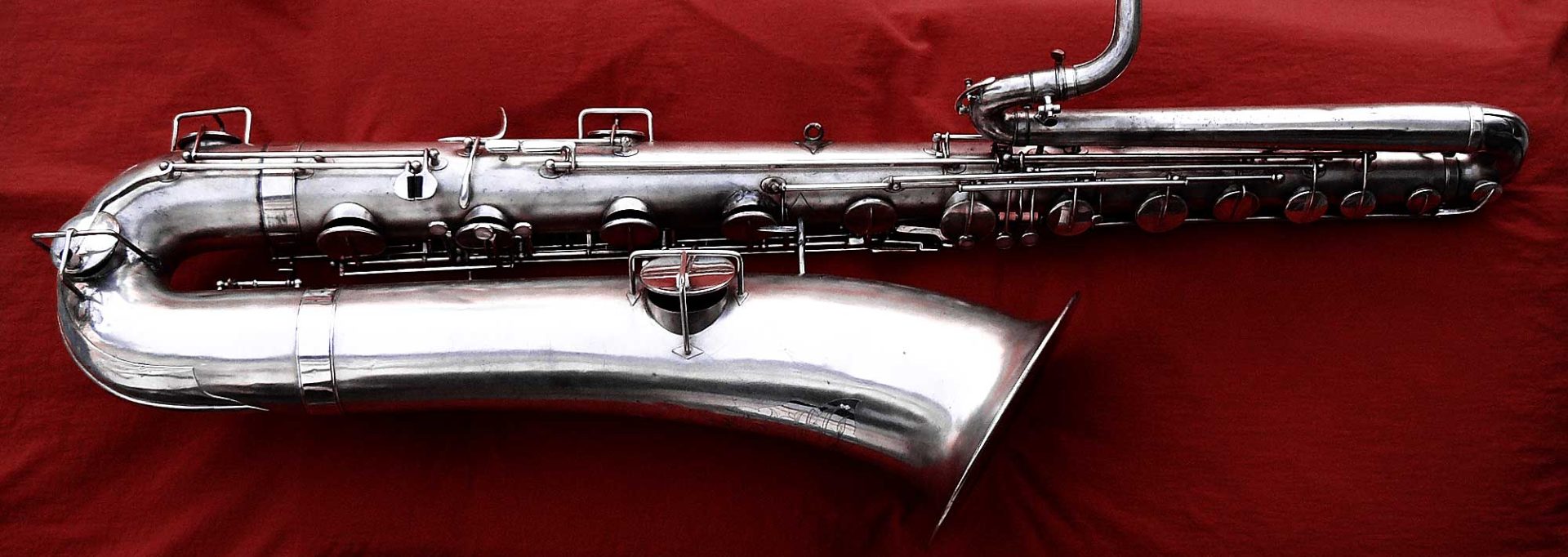Whenever we hear someone talk about radio waves being picked up inadvertently, or of problems with electromagnetic frequencies (EMF), the stereotype of a someone with a tin foil hat often springs to mind. Today’s pop culture has managed to link these 2 concepts with delusions of paranoia so well, that the original message is often discounted since its source is considered deluded. :loco:
This cultural reference is of course current, but what was it like during the 1920s? Did conversations about stray radio waves automatically lead to people to think someone was delusional? Probably unlikely, since radio waves were a recent phenomena at the time, and no one knew much about them.
Take for example, today’s charming little trip down saxophone’s memory lane. In an article by Montague Glass published in The Delmarvia Star on January 20, 1928, the claim was made that radio signals were being picked up by the new electric stoves, irons, and washers being used in American households.
Since this occurred in 1928, I bet you can guess what kind of instrument was dominating those virgin airwaves. If you said saxophone, you would be correct, which is why the title for Montague Glass’ article in The Delmarvia Star naturally was:
Source: The Delmarvia Star, January 20, 1928
Oh yes, saxophone poisoning. What a charming little condition. I wonder what the treatment for it would be? Activated charcoal perhaps? Or maybe high flow oxygen through a mask. Oh I got it: a hyperbaric chamber. That’s it… That’s how they could treat saxophone poisoning. 😯
Seriously though, this is a snippet of the article that Glass wrote, as it relates to saxophones:
Source: The Delmarvia Star, January 20, 1928
Mmm… ![]() So did this, or did this not happen? Check out the rest of the article and see what you think. I’m sure some of you are much better versed in radio waves than I am.
So did this, or did this not happen? Check out the rest of the article and see what you think. I’m sure some of you are much better versed in radio waves than I am.
In the meantime, I guess we should be booking some hyperbaric chamber time for our family members. Their saxophone toxin levels must be through the roof! 😈
I wonder if we as players develop an immunity to it—similar to how bee keepers develop to bee stings—or if it might lead to illness and premature death among saxophone players? Now that theory really is… ![]() BTW, has anyone seen my tinfoil hat?
BTW, has anyone seen my tinfoil hat? 





This is, of course, a whole mess of Hoodoo, but metal toxicity from direct contact is no joke.
I have come across instruments (both saxophones and flutes) that had been fabricated by less than scrupulous makers with either high lead or cadmium content (both toxic heavy metals), a chromium finish (also toxic, and not easily distinguished from nickel), or negligently not rinsed of the acids that are typically used to electroplate metal.
Responsible makers know better. Please be careful when considering a brand of instrument that has not been reviewed by someone whom you trust.
Mmmm… Makes me wonder about those metal mouthpieces that we put into our mouths.
It’s interesting that you raise this issue Paul, I’ve often wondered about this too, since we know saxophones are made up of alloys that vary from manufacturer to manufacturer. Who’s to say what you’re really getting? Although I have heard nothing one way or the other about this in relations to these horns, I’ve often wondered about those oddball horns from India, and the horns from Russia that pop up on eBay from time to time. Materials were at a premium when some of these horns were made.
…… … Makes me wonder about those metal mouthpieces that we put into our mouths….
The heavy metals are toxic and should be avoided, but the lighter metals also affect peoples behaviour by binding to the social hormone oxytocin.
One of the disadvantages of metal mouthpieces ……. less hugging.